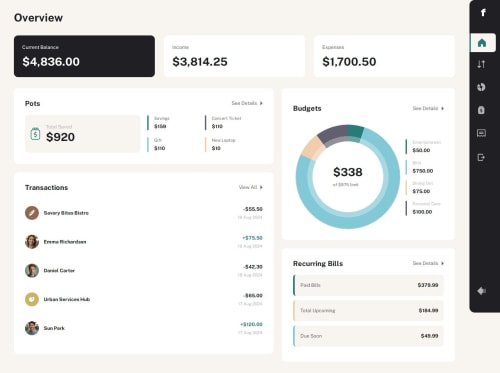personal-finance-app-with-backend

Solution retrospective
Hi it took me a long time but I finished it finally.
It was the first time I worked with backend and I had to remove it a few times and rewrite it, so I would definitely do that differently next time. Also for the users who signed up and logged in I had to remove the images and changed it with background color because I was using mongo's free database and it had limited storage.
What challenges did you encounter, and how did you overcome them?The login part and saving data in mongo was quit a challenge And took me a long time to fix that and uploading it to vercel was another challenge because I didn't know how I was suppose to upload the backend. Also I didn't see any assets regarding the backend for example the logging in or logging out svg or img so I had to find something for them I hope it's not bad. inside the recurring page I also didn't know whether I should add the current date or the dates in the data so I kinda added both. I added the current date for logged in users, and for the users that are not logged in ,they just see the data that was in the assets.
What specific areas of your project would you like help with?I had to add other calculations and images so the UI is a bit different then what it was in the assets. I'm still not sure about the backend and the refresh token. I used different types of skeleton animation for each page because I wasn't sure which is better. Also I don't know if the chart inside the budget page works fine. if you know any community for frontend to talk or seek advice I appreciate it if you share it. Any advice or anything will be helpful about any part of the code and UI.
Please log in to post a comment
Log in with GitHubCommunity feedback
No feedback yet. Be the first to give feedback on good-mistake's solution.
Join our Discord community
Join thousands of Frontend Mentor community members taking the challenges, sharing resources, helping each other, and chatting about all things front-end!
Join our Discord